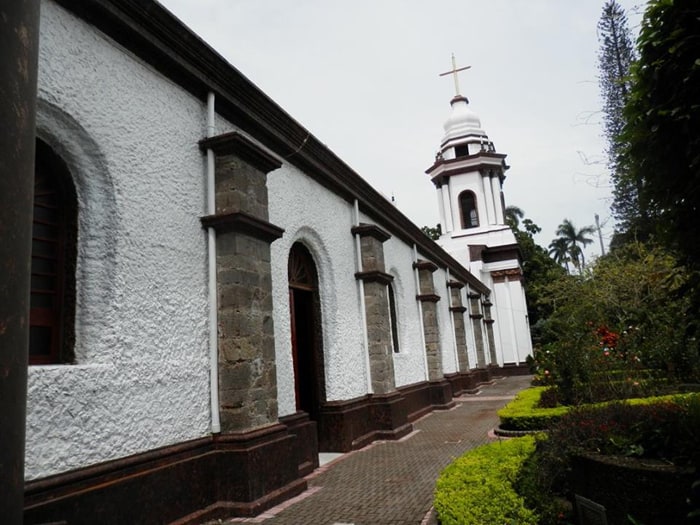Alajuela, the country’s second largest city, 17 kilometers northwest of the capital and home of Juan Santamaría International Airport, is celebrating its 228th anniversary Oct. 12, Cultures Day in Costa Rica. The same date commemorates two other historic happenings: the first Spanish tourists in America in 1492 and the founding of Alajuela’s first parish in 1790. Planners promise a month full of exciting events.
Alajuela is known as the City of Mangoes for the profusion of trees that rain fruit in the city’s parks and byways. It is also called El Erizo, or Hedgehog, for its most famous native son, Juan Santamaría, who torched enemy headquarters in the war against the filibusteros in 1856 and saved Costa Rica’s independence; Santamaría was called “el erizo” for his crispy, frizzy hair.
Alajuela is also known for its apodos, or nicknames. Everyone has one, and some are wonderfully creative. Also, Alajuelans are called manudos, because, according to local folk tales, they have uncommonly large hands, or manos.
Alajuela was born La Lajuela on Oct. 12, 1782, when 264 neighbors from the five barrios that comprised the town met to form a community and build a chapel. Nobody took minutes at that first meeting, so today’s historians can only guess that the name came from the word lajas, the large flat stones found in nearby rivers that were used for paving the streets and are still found in some sidewalks.
The city was laid out in the Spanish style with the chapel fronting a central square, which was used for burials, a market and, later, a park. Calle Ancha, which encircles the city center, marked the town’s limits.
Once considered a rural town, Alajuela combines a horse culture with current trends in theater, music and education. April 11 is Juan Santamaría Day and commemorates the Battle of Rivas in 1856; students and dignitaries come from all over the country for the anniversary parade. The same week, a thousand horses and riders gather for the gran tope, or horse parade.
Alajuela gave the nation several presidents, including strongman Tomás Guardia (1870-1882), Bernardo Soto (1885-1890) and the popular León Cortés (1936-1940).
The city has kept up and spruced up its historical center with the Our Lady of the Pillar Cathedral, the Juan Santamaría Museum in the old military fort, and the Casa de la Cultura, built in 1914 to house the post office, all facing the Central Park.
Oct. 12 will combine religious, historical and cultural activities in the Central Park, with processions in the morning and traditional mascaradas and a cimarrona dance starting at noon.








